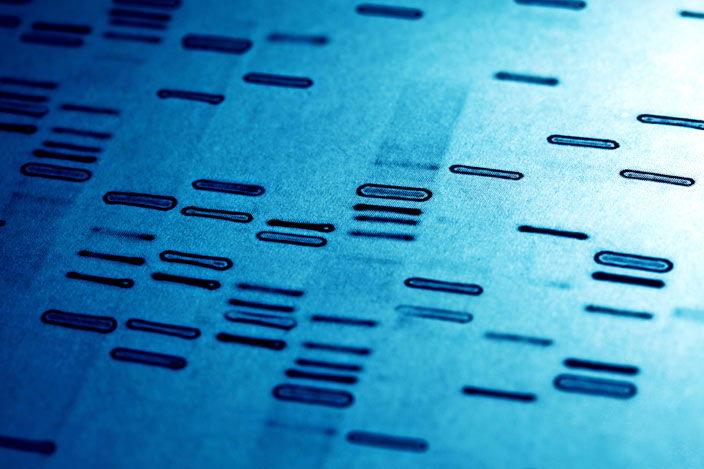In a breakthrough that promises to transform wildlife research and conservation efforts, scientists at the Smithsonian Institution have developed a cutting-edge DNA analysis technique capable of identifying specific animals from traces found in their feces. This innovative method allows for non-invasive monitoring of elusive species and offers unprecedented accuracy in tracking biodiversity, shedding new light on ecosystems around the world.
Breakthrough DNA Technique Enables Precise Animal Identification Through Fecal Samples
Scientists at the Smithsonian Institution have developed a cutting-edge DNA analysis method that accurately identifies individual animals using only their fecal matter. This non-invasive technique harnesses advancements in genetic sequencing, allowing researchers to bypass traditional, often stressful tracking methods. By extracting high-quality DNA from scat, the method not only pinpoints species but can also differentiate between individual animals, offering unprecedented insights into wildlife populations, migration patterns, and conservation status.
Key benefits of this approach include:
- Non-invasive monitoring: No need for tranquilizers or physical capture.
- Cost-effective data collection: Easier field sampling reduces effort and expenses.
- Enhanced data accuracy: Precise genetic markers enable identification down to the individual level.
| Feature | Traditional Method | New DNA Technique |
|---|---|---|
| Invasiveness | High (capture and tagging) | Low (fecal sample analysis) |
| Species Identification | Moderate (visual or morphological) | High (genetic sequencing) |
| Individual Identification | Limited | Precise |
Detailed Insights Into Wildlife Monitoring and Conservation Efforts Using Genetic Analysis
Advancements in genetic analysis have revolutionized wildlife monitoring by enabling researchers to identify individual animals through their fecal samples. This non-invasive method provides a wealth of data on elusive species without the need for direct contact, drastically reducing stress on the animals and minimizing human interference. By extracting DNA from scat, scientists can determine not only the species but also kinship, gender, and even unique genetic signatures. This technology is particularly valuable in monitoring endangered populations where traditional tracking methods prove challenging or costly.
Such insights empower conservationists to implement targeted strategies that enhance species protection and habitat management. The following summarizes key benefits of genetic scat analysis in conservation:
- Individual Identification: Distinguishing specific animals within a population
- Population Health Assessment: Monitoring genetic diversity and detecting inbreeding
- Habitat Usage: Mapping movement patterns and territorial range without visual sightings
- Poaching and Illegal Trade Detection: Linking seized biological material to specific geographic regions
| Feature | Traditional Method | DNA Feces Analysis |
|---|---|---|
| Animal Identification | Tagging/Collaring | Non-invasive genetic fingerprinting |
| Stress to Animal | High | Minimal |
| Data Accuracy | Visual/Tracking errors possible | Highly precise |
| Cost | Expensive equipment/deployment | Lower long-term cost |
Experts Recommend Expanding DNA Sampling to Enhance Biodiversity Tracking and Protection
Scientists and conservationists are advocating for a substantial increase in DNA sampling efforts to improve the accuracy and scope of biodiversity monitoring. By analyzing genetic material extracted from animal feces, researchers can identify individual species with remarkable precision, even in remote or densely forested areas where traditional tracking methods fall short. This approach not only reduces disturbance to wildlife but also opens new possibilities for mapping elusive populations that were previously difficult to study.
Key benefits of expanding DNA sampling include:
- Non-invasive data collection, minimizing impact on habitats and species.
- Enhanced detection of rare or endangered animals without direct sightings.
- Improved understanding of population genetics and migration patterns.
- Rapid identification aiding in the prompt response to environmental threats.
| DNA Sampling Method | Effectiveness | Cost Efficiency |
|---|---|---|
| Fecal Analysis | High | Moderate |
| Hair Trapping | Medium | Low |
| Environmental DNA (eDNA) from Water | High | High |
In Summary
As this innovative DNA analysis technique gains wider adoption, scientists anticipate a significant leap forward in wildlife research and conservation efforts. By accurately identifying species from fecal matter alone, researchers can monitor animal populations with greater precision, inform habitat protection strategies, and combat illegal poaching more effectively. The Smithsonian Institution’s breakthrough underscores how cutting-edge science continues to transform our understanding of the natural world-starting, quite literally, from the ground up.
